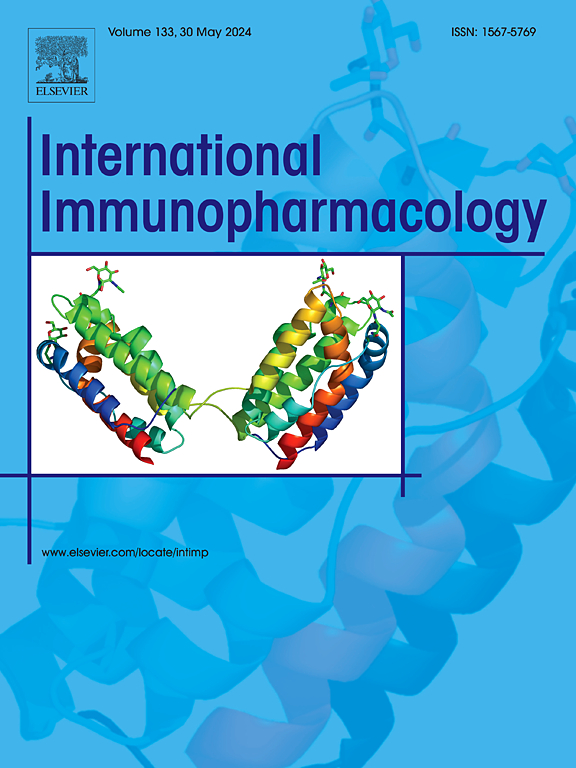Interleukin-36β inhibits CD4+CD25+ regulatory T cells by activating endoplasmic reticulum-phagy in septic mice
IF 4.8
2区 医学
Q2 IMMUNOLOGY
引用次数: 0
Abstract
Background
CD4+CD25+ regulatory T cells (Tregs) contribute to the pathogenesis of sepsis-induced immunosuppression. We have identified interleukin (IL)-36β as a critical cytokine regulating CD4+CD25+ Treg activity.
Methods
This study aimed to further investigate the underlying mechanism of IL-36β-triggered responses in murine CD4+CD25+ Tregs in presence of lipolysaccharide (LPS) and in a mouse model of sepsis induced by cecal and puncture (CLP).
Results
Following LPS exposure, ER-phagy activity increased, peaked at 12 h, and then markedly declined. Furthermore, we observed that IL-36β could activate ER-phagy of CD4+CD25+ Tregs under LPS challenge. Mechanistic investigations revealed the critical involvement of the endoplasmic reticulum (ER) stress-related protein kinase R (PKR)-like endoplasmic reticulum kinase (PERK)-activating transcription factor 4 (ATF4) signaling axis in IL-36β-induced ER-phagy. Moreover, IL-36β knockout (IL-36β−/−) strongly dampened ER-phagy and PERK-ATF4 signaling under LPS stimulation compared to the wild-type group. IL-36β-elicited effects on CD4+CD25+ Tregs were significantly abrogated by FAM134B (the ER-phagy-specific receptor) knockout or salubrinal (a specific inhibitor of the PERK-ATF4 pathway). In addition, IL-36β was potent in diminishing serum levels of creatinine (Cr), aspartate transaminase (AST), and alanine transaminase (ALT) and attenuated histopathologic alterations in the liver, kidneys, and lungs of CLP mice. Importantly, the absence of IL-36β notably aggravated the survival rate of septic mice, indicating a beneficial role in septic prognosis.
Conclusion
IL-36β can down-regulate the immune activity of CD4+CD25+ Tregs via ER-phagy induction. Our study might provide novel targets for therapeutic strategies to prevent the development of sepsis.

求助全文
约1分钟内获得全文
求助全文
来源期刊
CiteScore
8.40
自引率
3.60%
发文量
935
审稿时长
53 days
期刊介绍:
International Immunopharmacology is the primary vehicle for the publication of original research papers pertinent to the overlapping areas of immunology, pharmacology, cytokine biology, immunotherapy, immunopathology and immunotoxicology. Review articles that encompass these subjects are also welcome.
The subject material appropriate for submission includes:
• Clinical studies employing immunotherapy of any type including the use of: bacterial and chemical agents; thymic hormones, interferon, lymphokines, etc., in transplantation and diseases such as cancer, immunodeficiency, chronic infection and allergic, inflammatory or autoimmune disorders.
• Studies on the mechanisms of action of these agents for specific parameters of immune competence as well as the overall clinical state.
• Pre-clinical animal studies and in vitro studies on mechanisms of action with immunopotentiators, immunomodulators, immunoadjuvants and other pharmacological agents active on cells participating in immune or allergic responses.
• Pharmacological compounds, microbial products and toxicological agents that affect the lymphoid system, and their mechanisms of action.
• Agents that activate genes or modify transcription and translation within the immune response.
• Substances activated, generated, or released through immunologic or related pathways that are pharmacologically active.
• Production, function and regulation of cytokines and their receptors.
• Classical pharmacological studies on the effects of chemokines and bioactive factors released during immunological reactions.

 求助内容:
求助内容: 应助结果提醒方式:
应助结果提醒方式:


